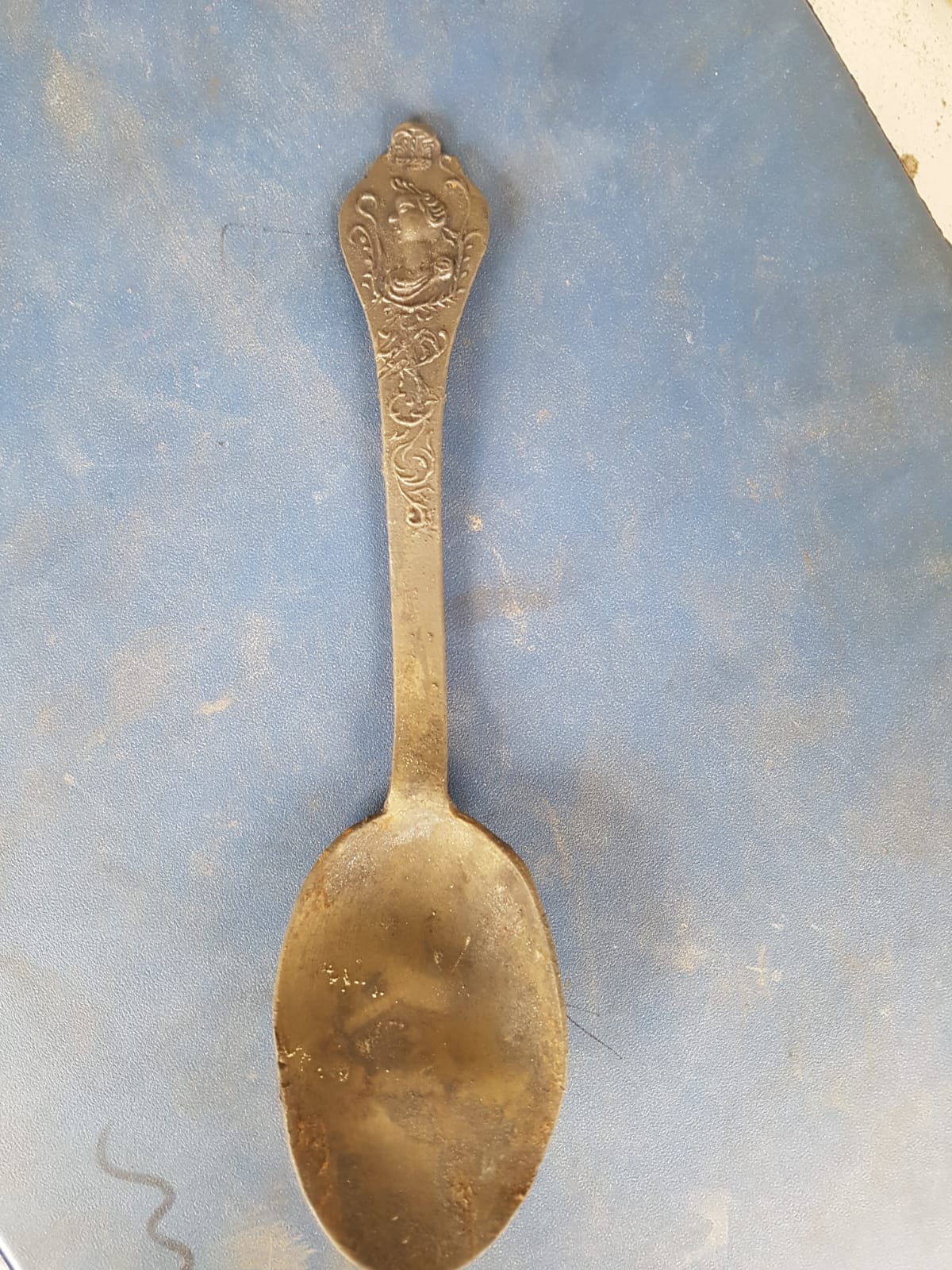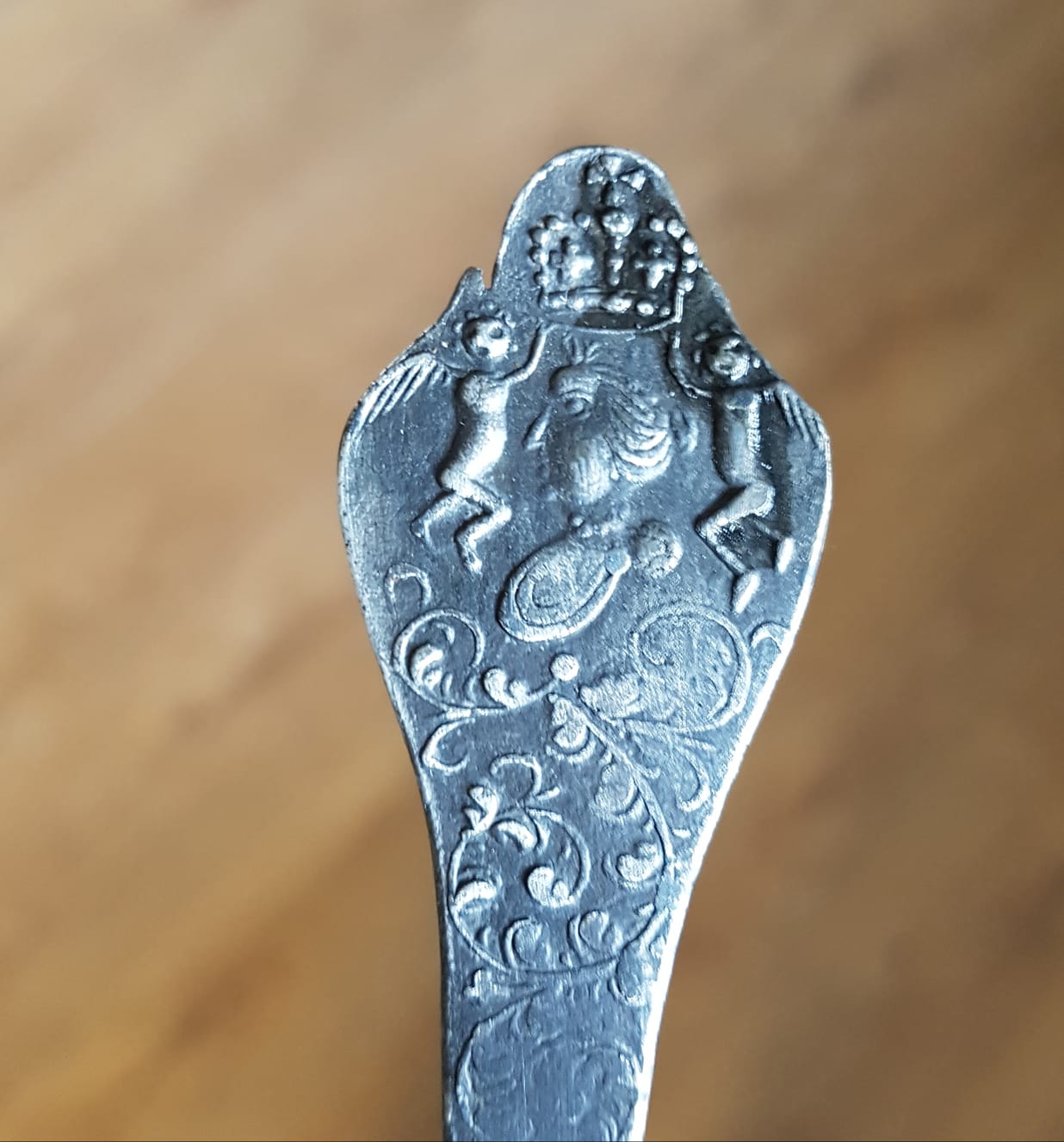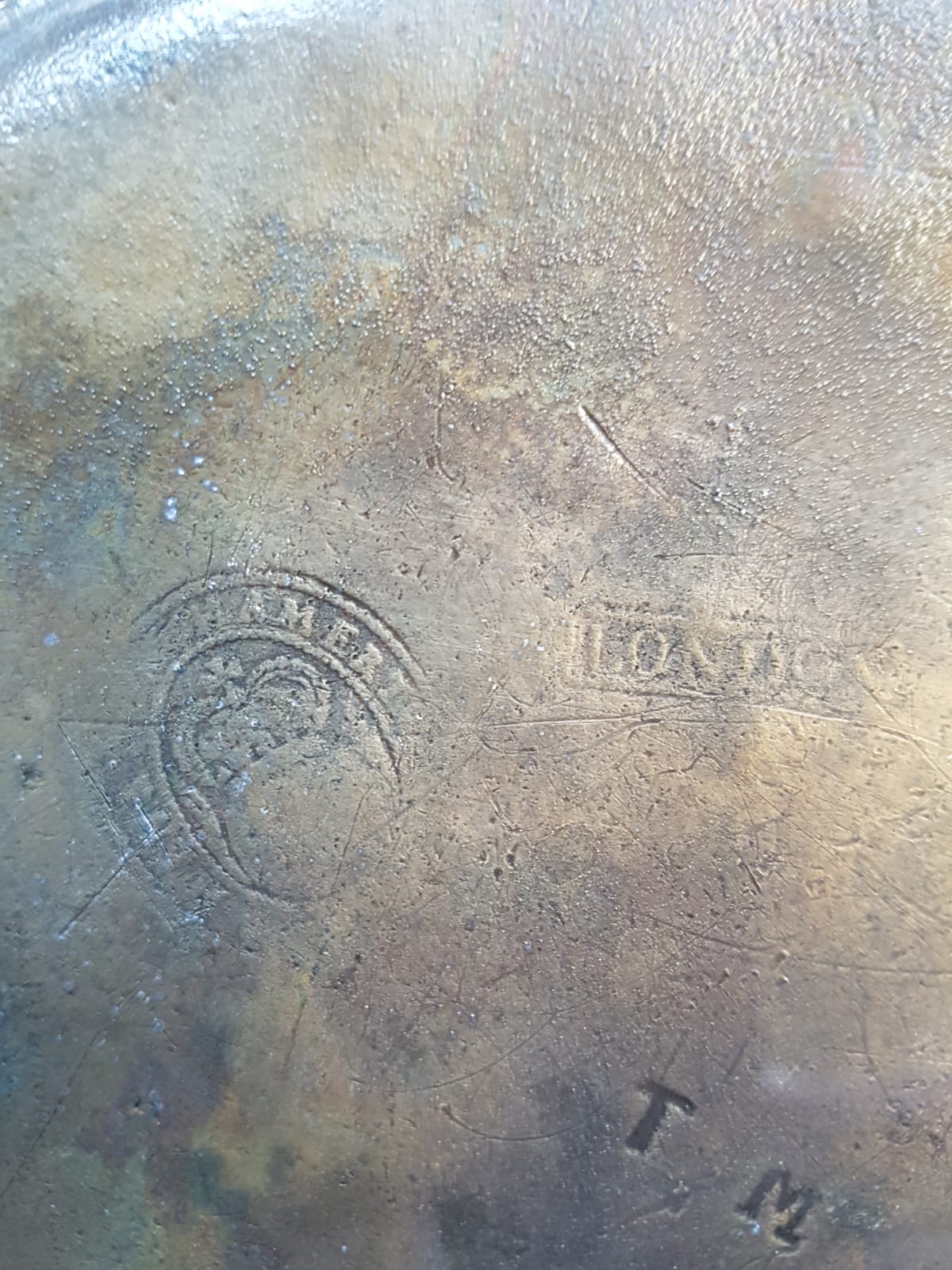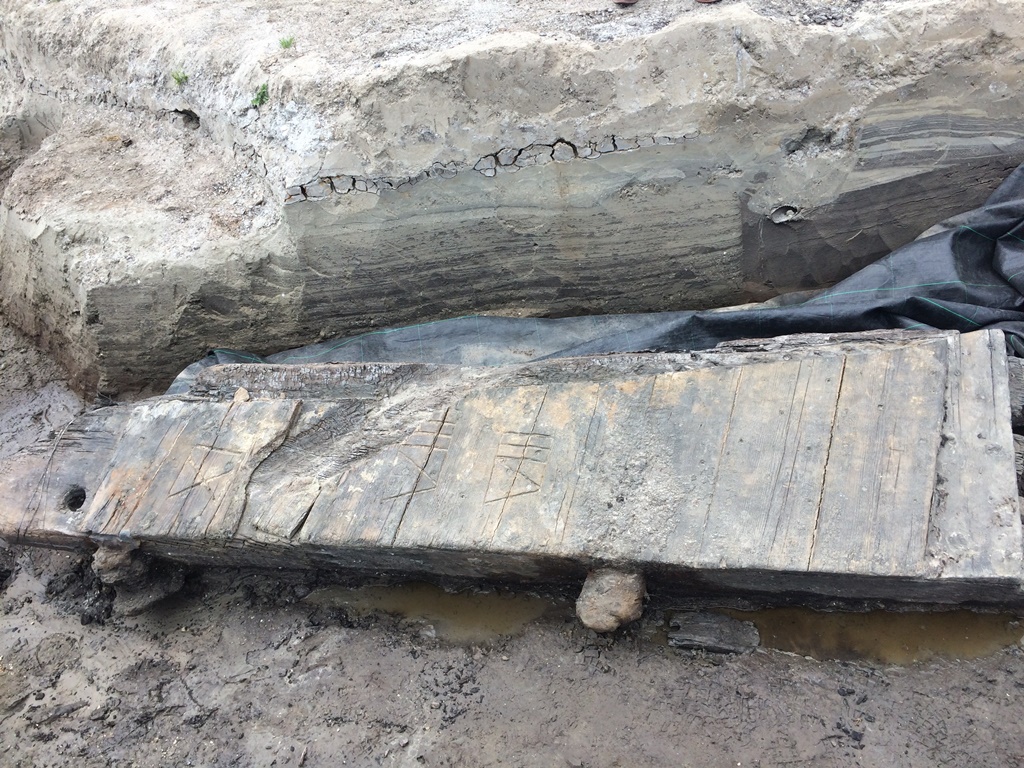Twee zeldzame Royal Portrait Spoons gevonden in ‘Noordoostvaarder’
Inventaris scheepswrak toont connectie met Engeland duidelijk aan

Maritiem archeoloog Yftinus van Popta van de Rijksuniversiteit Groningen had vanmiddag een primeur voor Leen Verbeek, commissaris van de Koning en Aucke van der Werff, burgemeester van gemeente Noordoostpolder. Hij toonde hen de twee zeldzame Royal Portrait Spoons uit London. Van Popta: “Pas toen ik de lepels schoonmaakte, zag ik wat voor unieke exemplaren dit zijn.” Bij de opgraving van het scheepswrak, de Noordoostvaarder genoemd, zijn verschillende voorwerpen gevonden die uit Engeland komen.
Queen Anne op de Royal Portrait Spoons
Burgemeester Aucke van der Werff: “Een prachtige vondst, waaraan duidelijk te zien is dat er belangrijke mensen aan boord waren. Op de bovenkant van de stelen is het portret van Queen Anne duidelijk te zien. Op één van de lepels houden twee engeltjes de kroon boven haar hoofd.” Ook de commissaris van de Koning was onder de indruk van de vondsten en de opgraving. Queen Anne regeerde van 1702-1714 en was de zus van Mary Stuart (de vrouw van de Nederlandse stadhouder en latere Engelse koning Willem III). Op de achterkant van de steel staat het Londense tingieters 'touchmark'. Het voelbare en zichtbare kenmerk van de Tudor-roos.
Tinnen borden en schaal van Londense tingieter
Ook de gevonden tinnen borden en schaal zijn voorzien van het 'touchmark' van tingieter Henry Hammerton (1706-1741): de Tudor-roos met daarboven een kroon en het woord LONDON. Daarnaast zijn er ook tinnen lepels gevonden. Zij zijn van het vroeg-18e-eeuwse type 'rat-tail spoon'. Deze bevatten een driehoekig reliëf aan de onderkant van de bak van de lepel.
De gevonden gewichtjes zijn een 3-pennyweight (4,67 gram), een 4-pennyweight (6,22 gram) en een bullion weight met een gewicht van 20 pennyweight en 16 grains (omgerekend 32,14 gram). Het model van de gewichtjes en de daarbij gebruikte merktekens doen vermoeden dat deze objecten eveneens afkomstig zijn uit London.
Dieptemaat van het schip in Engelse voet (30,48 cm)
Op het achtersteven staan dieptemerken. Deze geven de maximale diepgang van het schip aan. De afstand tussen twee dieptemerken bedraagt steeds een Engelse voet (30,48 cm). Uit de dieptematen is af te lezen dat de Noordoostvaarder een diepgang van 3 tot 3,5 meter had. Dat is te diep voor dit deel van de voormalige Zuiderzee en een indicatie dat het schip is vastgelopen.
De Noordoostvaarder geeft steeds meer van zijn geheimen prijs. Of het schip ook daadwerkelijk uit Engeland komt, is nog niet vast te stellen, maar alles wijst steeds meer in die richting. In elk geval staat vast dat het om een niet Nederlands schip gaat. De vrijwilligers van de Archeologische Werkgemeenschap Flevoland die meehelpen bij de opgraving, zijn ook erg enthousiast over de vondsten.




